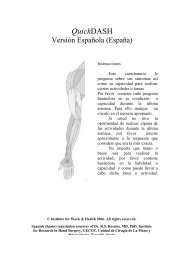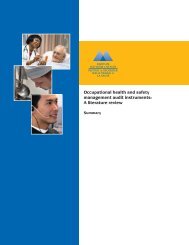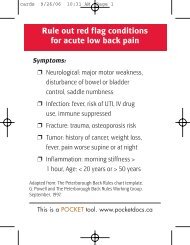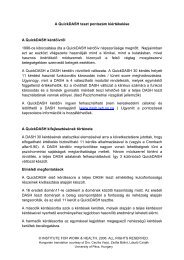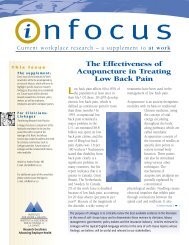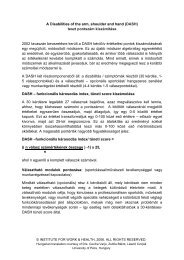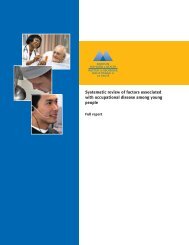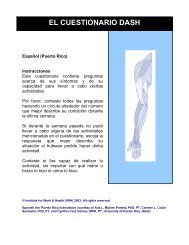A systematic review of injury/illness prevention and loss control ...
A systematic review of injury/illness prevention and loss control ...
A systematic review of injury/illness prevention and loss control ...
- No tags were found...
You also want an ePaper? Increase the reach of your titles
YUMPU automatically turns print PDFs into web optimized ePapers that Google loves.
have intended to prevent both “asymptomatic” employees from developing symptom ordisorder <strong>and</strong> “symptomatic” individuals from further morbidity <strong>and</strong> mortality, <strong>and</strong> thereforewill be classified as both. If you choose other please provide details.Primary PreventionSecondary PreventionBothOtherIntervention Characteristics:12. Describe all interventions evaluated.If <strong>control</strong> received some treatment (or portion <strong>of</strong> an intervention) please describe as it will beimportant in underst<strong>and</strong>ing what is being evaluated.E.g.: I 1 - exercise ("training to improve physical fitness"); I 2 -ergonomic trainings" toimprove lifting technique"; C 1 -no exercise <strong>and</strong> no "training"*Organize your description <strong>of</strong> interventions according to I 1 , I 2 , C, I 1 C, <strong>and</strong> I 2 C13. Was there confirmation the intervention occurred (check all that apply)? Providedetails in the comment box to support your response.E.g.: “exercise” could be confirmed either by self-report in exercise logs, attendance inclasses, or questionnaire report <strong>of</strong> exercises done; “ergonomics training” from above couldbe confirmed by researchers observing “correct” ergonomic lifting technique.Direct Measurement by EquipmentObservationSelf ReportNone14. How long after the intervention implementation did confirmation occur? Monitoring<strong>of</strong> attendance would be confirmation “during” the intervention. A questionnaire <strong>of</strong> selfreportedexercise one month after the intervention would be 1 month.15. What was the duration <strong>of</strong> the intervention in months/days/hours? (Note this is notthe follow-up time but the actual duration <strong>of</strong> the intervention implementation). Indicatein months if possible, if not in weeks, days etc. or enter “NP”.*Use notation (I 1 , I 2 , I 1 C, <strong>and</strong> I 2 C) for different intervention groups.E.g., Baseline data collected on May 1st, 2000. Intervention implemented June 1st, 2000continues until June 1 st , 2001. Follow-up data collected on May 1st 2002. Note thisinformation may be presented in a number <strong>of</strong> ways (tables, figures, timelines etc). In thisexample the duration <strong>of</strong> intervention is I 1 = 12 months.For “administrative” data it is best to establish what the intervention period is first (e.g., liftswere installed between April 2002 to July 2002).A <strong>systematic</strong> <strong>review</strong> <strong>of</strong> <strong>injury</strong> <strong>and</strong> <strong>illness</strong> <strong>prevention</strong> <strong>and</strong> <strong>loss</strong> <strong>control</strong> (IPC) programs77



